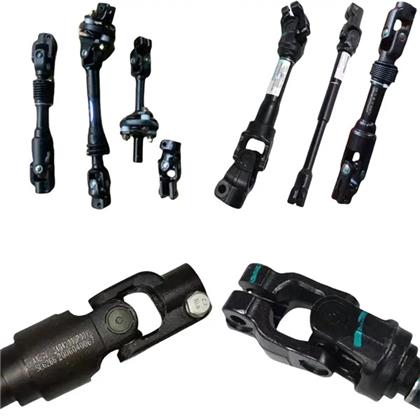From Usage toward Fixes: Maintaining Your Lower Steerage Shaft

The bottom steering shaft is an important component in your vehicle's steering system, connecting the control column to the rack and pinion. With time, this part can experience damage, leading to diminished steering performance and potential safety issues. Understanding how to maintain and repair your bottom steering shaft can prevent high repairs and improve your driving experience.
In this guide, we will explore various types of bottom steering shafts, including adjustable lower steering shafts and dual-stage bottom steering shafts, as well as the benefits of composite lower steering shafts. By keeping your bottom steering shaft in optimal condition, you can ensure accurate handling and a smoother ride. Whether https://www.nosen-tech.com/display/679063.html 're a experienced mechanic or a car fan, having the right knowledge about maintenance will help you get the most out of your vehicle.
Comprehending Customizable Lower Direction Shafts
Adjustable bottom direction shafts offer operators the capability to tailor their directional encounters according to specific preferences and driving environments. These bars are constructed with a feature that allows for length adjustments, which can improve the vehicle's maneuverability and responsiveness. By adjusting the shaft's length, motorists can achieve a more comfortable hold and improved feedback from the steering system, which makes it easier to traverse various landscapes and vehicular contexts.
One of the key advantages of adjustable lower steering bars is their versatility. Regardless of whether you are a casual operator or an off-road fanatic, having the ability to adjust your control configuration can result in a superior total situation. This adaptability is particularly beneficial for those who engage in motorsports or who regularly change vehicle setups for multiple uses, allowing them to maximize capability while preserving oversight.
Regular upkeep and inspection of customizable beneath control bars are crucial to ensure ideal operation. Over time, use can affect the modification features and the reliability of the directional setup. Operators should regularly inspect for any signs of defects or looseness in the modification joints, making sure that these parts stay in good condition to offer the most effective steering reaction possible.
Advantages of Two-Stage Lower Steering Shafts
Two-stage lower steering shafts offer significant flexibility in vehicle handling. By incorporating a dual-section design, these shafts can adjust for varying conditions, providing greater articulation. This versatility helps drivers maintain superior control during tight turns and rough terrain, ultimately improving the overall driving experience.
Another key advantage of two-stage lower steering shafts is their potential to dampen shocks and vibrations more effectively than standard single-stage shafts. The design allows for a more sensitive interaction with the road, lessening wear on other steering components. This not only enhances comfort for passengers but also contributes to the longevity of the steering system.
Finally, two-stage lower steering shafts are often more straightforward to install and adjust compared to their rigid counterparts. Many models include elements that facilitate fast adjustments, allowing drivers to tailor the shaft length or stiffness to suit their specific driving style or vehicle requirements. This adaptability makes them a favored choice among enthusiasts looking to enhance their vehicle setup.
Benefits of Hybrid Lower Directional Shafts
Hybrid lower steering shafts provide significant benefits over traditional metal shafts. Their low-weight nature decreases the overall mass of the directional system, which can lead to improved handling and fuel efficiency. The diminished weight can make the vehicle more agile, enhancing the driving feel, especially in performance-oriented applications. Additionally, this weight decrease is advantageous for battery-powered vehicles where each gram counts towards range and efficiency.
Durability is another key advantage of composite lower steering shafts. These shafts are designed to resist multiple environmental conditions that can lead to wear and damage. Composite materials are often immune to rust and corrosion, which can be a issue with metal components, especially in areas prone to moisture or road salt. This longevity translates to lower maintenance costs and a longer lifespan of the directional system.

Finally, composite lower steering shafts provide greater flexibility in terms of construction and adjustment. The manufacturing process allows for complex shapes that can optimize performance and fit within a vehicle's structural constraints. Furthermore, the adjustable features can support diverse driving styles and preferences, rendering these shafts ideal for a wider range of vehicles and applications. This flexibility ensures that drivers can attain their desired level of comfort and control while on the road.
